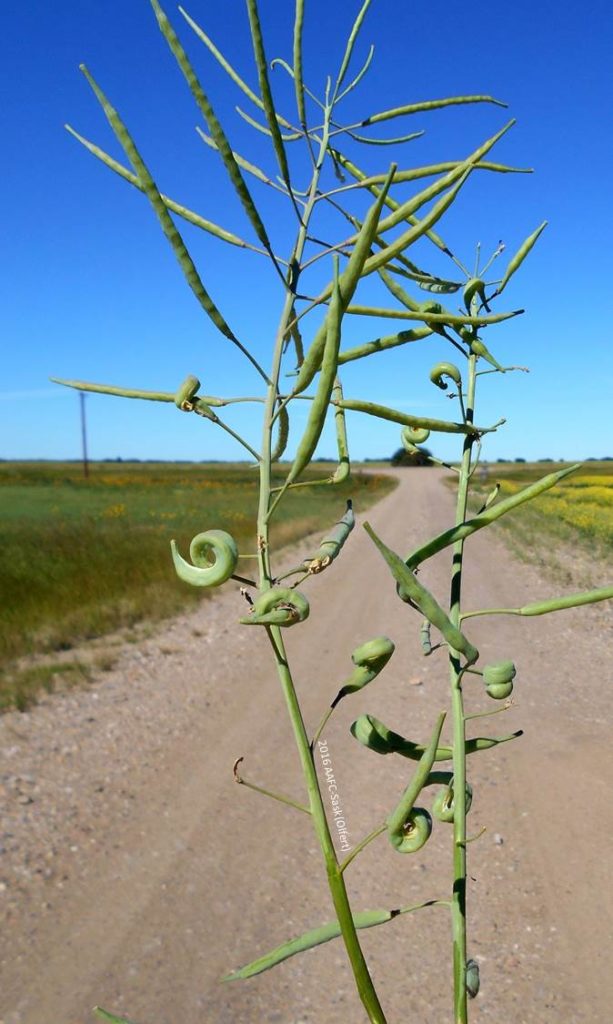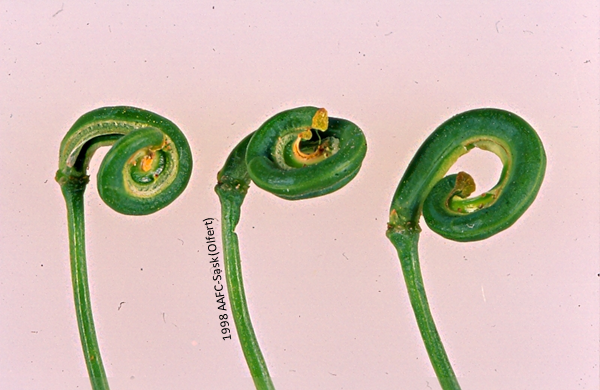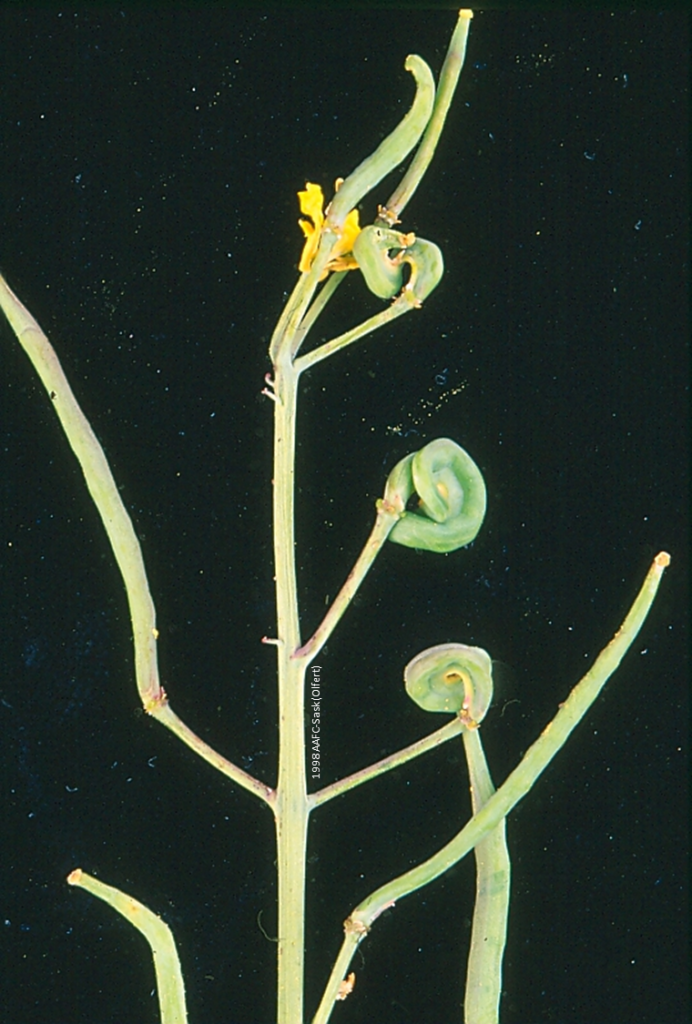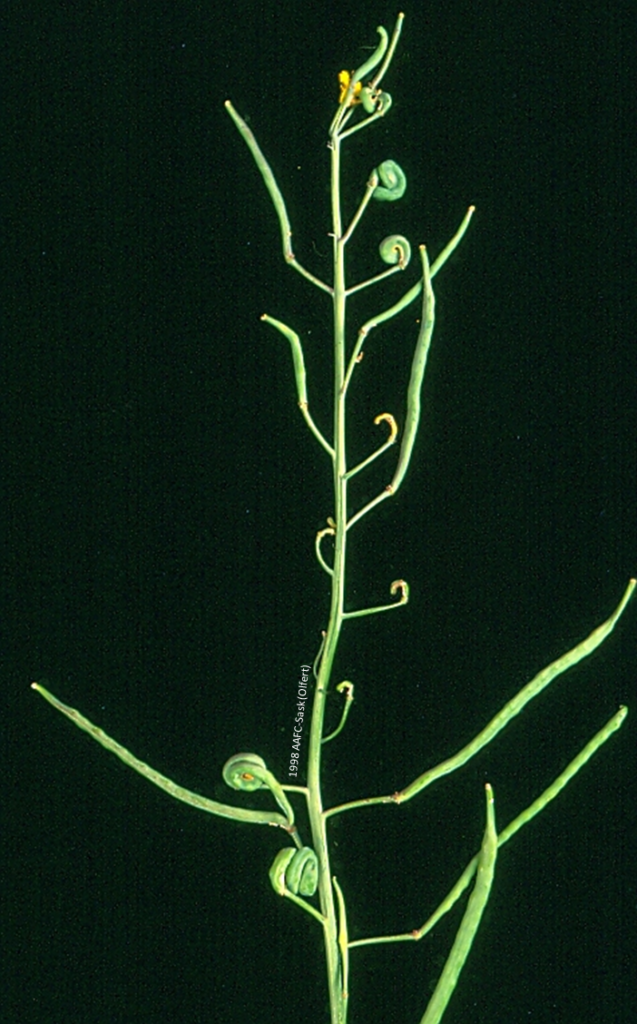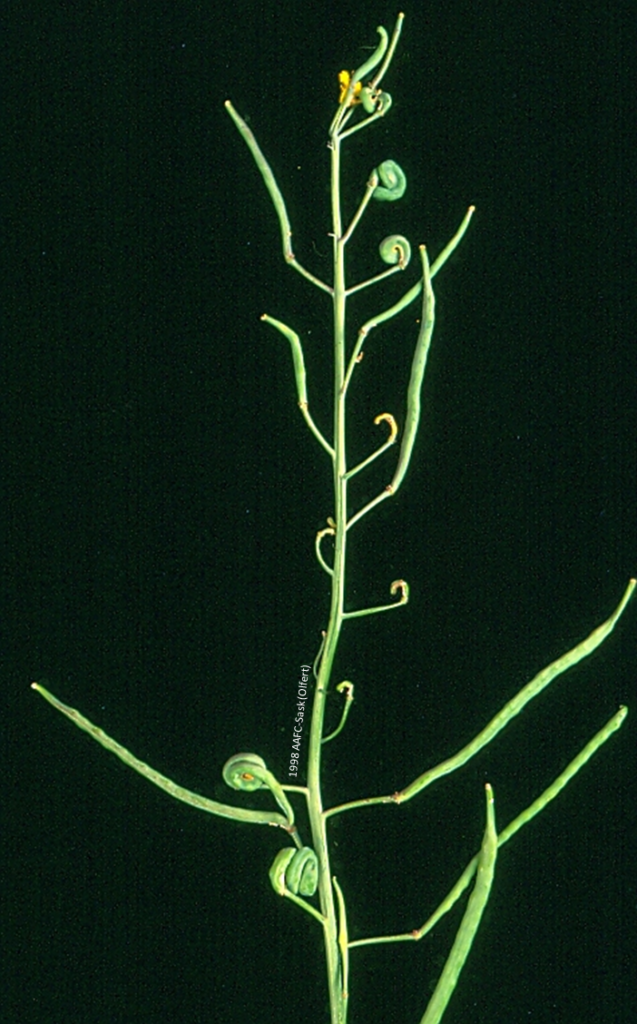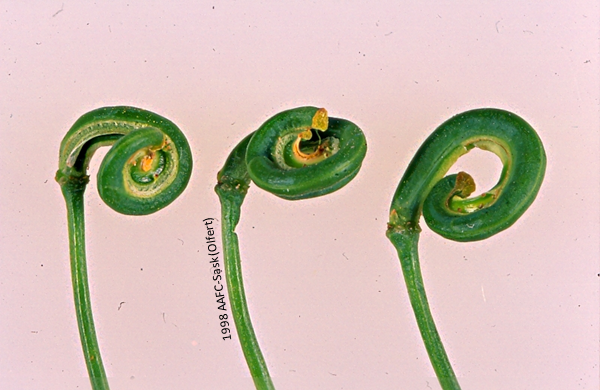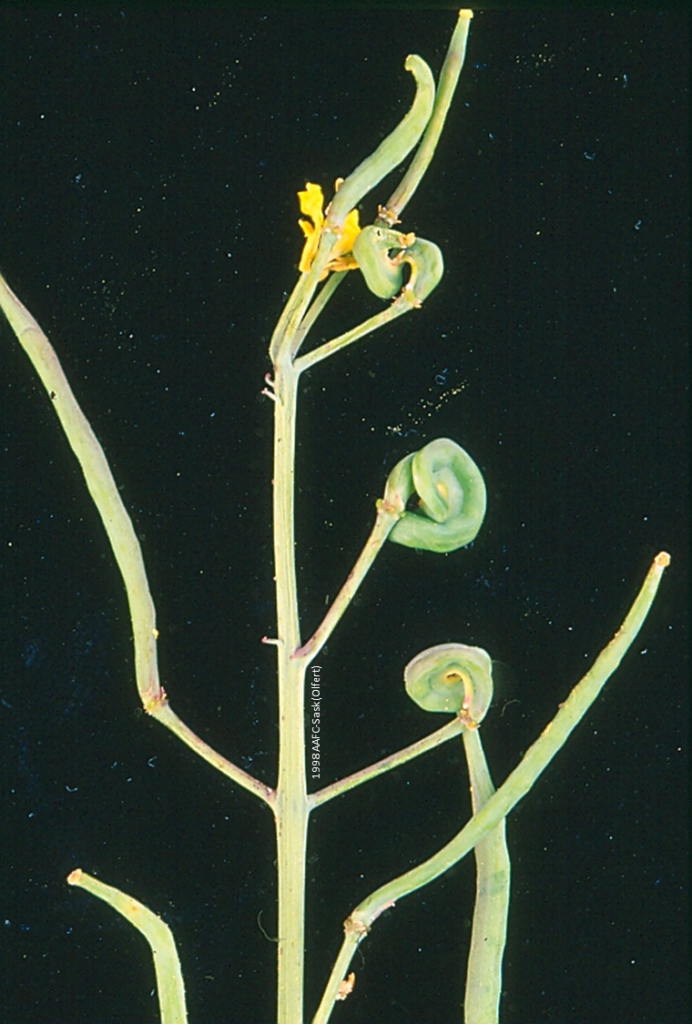Thrips in canola (Thynsanoptera) – While scouting at this time of year, curled canola pods may be encountered. The culprits are quite possibly thrips.
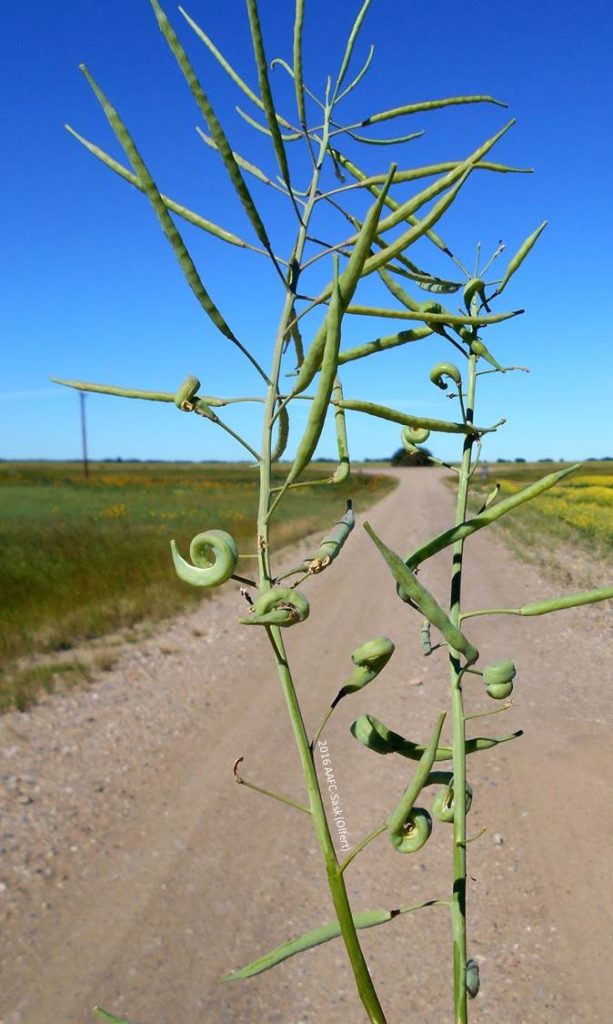
Damage: Flower thrips (Thysanoptera) are pests of a broad range of plants including cereals and broadleaved crops such as canola. Thrips are minute, slender-bodied insects with rasping-sucking mouthparts and feed by rasping the surface of canola buds and sucking up plant fluids.
Biology: Thrips have six life stages: egg, two larval stages, a prepupal and pupal stage and an adult. Both adults and nymphs cause damage by feeding on the flower and buds. Limited surveys in 1999 in Saskatchewan and Alberta indicated that the predominant species were Frankliniella tritici (flower thrip) followed by Thrips tabaci (onion thrip) and T. vulgatissimus (no common name).
In canola, pods damaged by thrips are often curled and tend to drop prematurely. Some species, such as T. vulgatissimus have been credited with contributing to pollination.
Read more about thrips in canola by accessing this article by Olfert et al. 1998).

